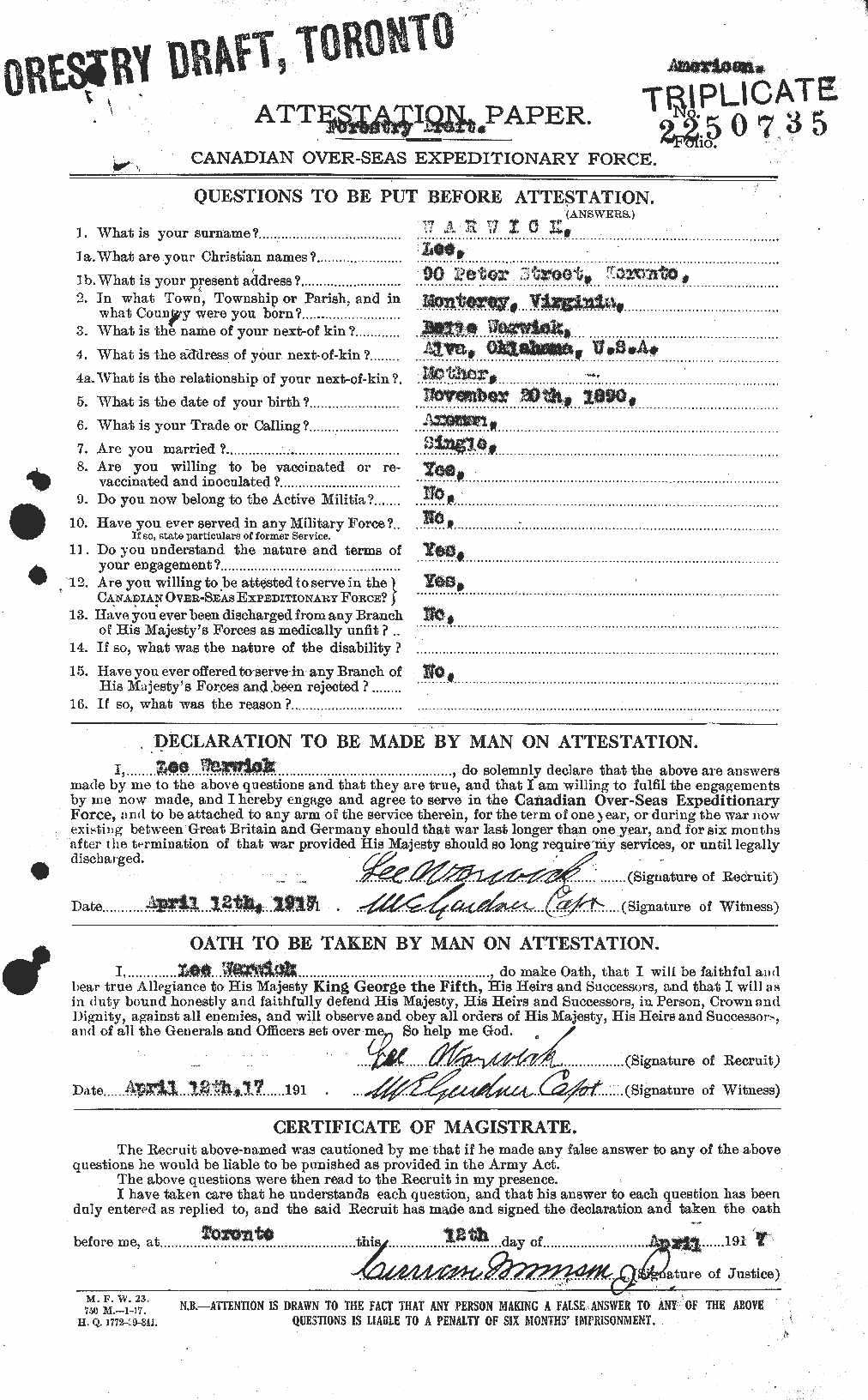America Enters World War I 1917

Constance and Bill McGill were living in Alva, Oklahoma in 1914 when World War I began and Their firstborn son, Gene M. McGill was born 27 December 1914. Constance younger brother Robert Lee Warwick joined the Canadian Expeditionary forces in 1914 showing Toronto as his address. Robert was listed as Lee Warwick with his next of kin as Belle Warwick.
When the First World War (WWI) began in 1914, the United States remained neutral. Despite this, German U-boats attacked U.S. merchant vessels and declared “unrestricted warfare against all ships” entering the war zone. Three years, into the conflict, President Woodrow Wilson stood in front of the U.S. Congress on April 2, 1917, and asked for a declaration of war, explaining that the United States must “exert all its power and employ all its resources” to end the First World War. Congress conceded. On June 26, 1917, just a few months after the U.S. officially joined the war, 14,000 U.S. infantrymen landed in France. They were immediately put through more combat training and, within a few months, were fighting on the Western Front. On April 2, 1917, President Woodrow Wilson addressed the United States Congress, asking for a declaration of war. Four days later, the U.S. Senate voted: 82 for and 6 against. In the House of Representatives, the decision was endorsed again 373 votes to 50. April 2, 1917, Washington, D.C.
Thousands of Americans flocked to recruitment stations, eager to “do their bit” to defeat the enemy. Within nine months, 175,000 American soldiers were stationed along the Western Front, prepared to take on the Central Powers. While some Americans criticized President Wilson for going back on his promise to remain neutral, most eagerly put their backs into the war effort, supporting the four and a half million American soldiers who served in Western Europe.
Enacted just a month after the U.S. declared war on Germany, the Selective Service Act required all males from the ages of 21 to 30 to register for military service. By the end of the war, half of the 4.8 million soldiers in the American military had been drafted. Boot camp was made up a variety of training: physical fitness, mental preparedness, and learning to handle various types of weapons. Bayonet practice was required almost daily, practicing the repetitive “short point stab” movement on dummies.
The American entrance into the First World War was a relief to the exhausted Allies. Troops were inspected by foreign officers and trained by their British and French comrades in the trenches.
| View or Add Comments (0 Comments)
| Receive
updates ( subscribers) |
Unsubscribe

